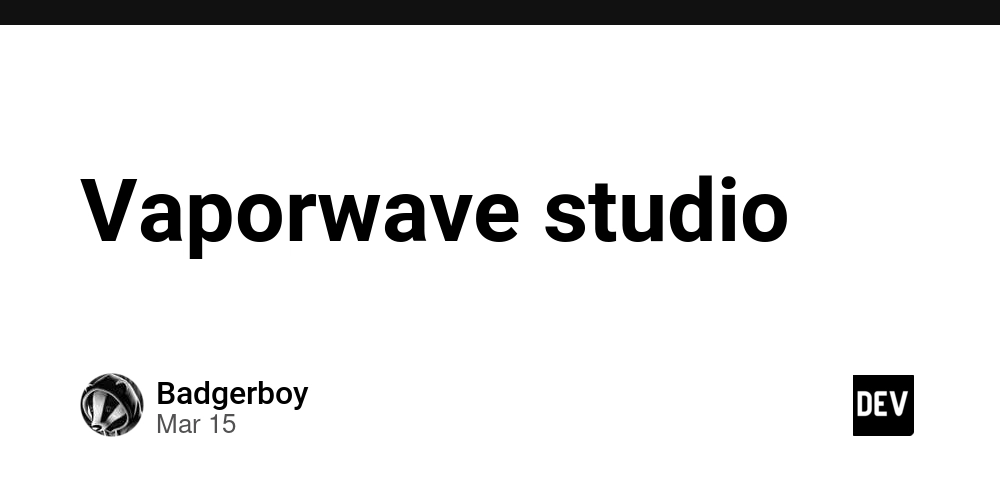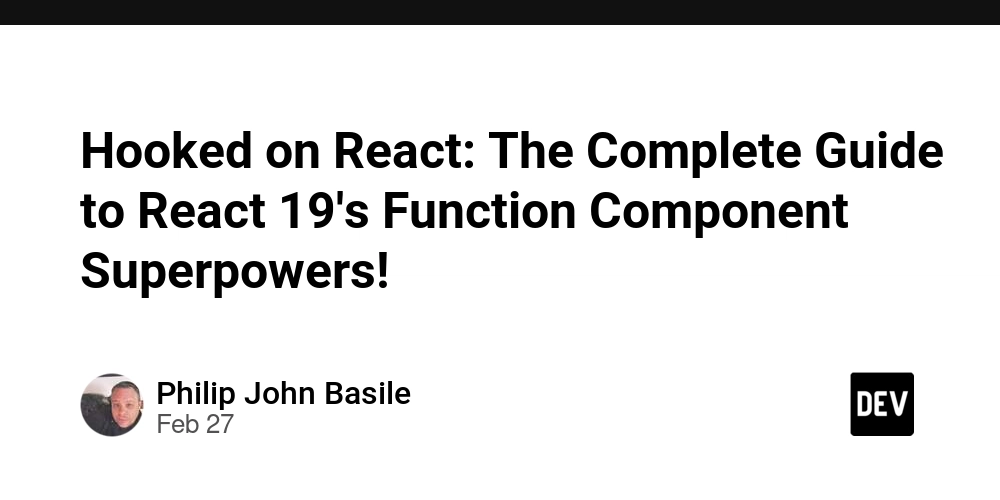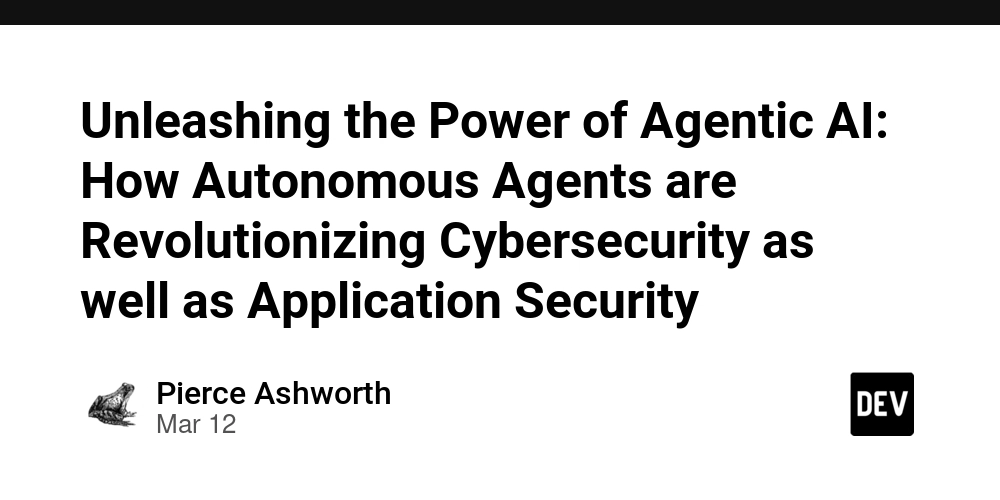How to Submit a Bounty on Gitcoin: A Comprehensive Guide to Accelerating Open Source Development
Abstract: This post explores the process of submitting a bounty on Gitcoin—a platform that bridges open-source projects and talented developers by leveraging blockchain technology. We discuss the step-by-step process of creating and funding a bounty, explain the underlying technology and ecosystem behind Gitcoin, and address practical applications, challenges, and future innovations in blockchain-based open source funding. In addition, we include technical insights, tables, bullet lists, and relevant resources to provide a holistic view of this modern funding model. Introduction In today’s dynamic technological landscape, open-source projects drive innovation and collaboration. Gitcoin, a decentralized platform built on Ethereum, has gained prominence as a way to connect developers with evolving open-source initiatives. By offering bounties as financial incentives, Gitcoin not only accelerates development but also rewards contributors for their skills. This guide is designed as a deep dive into how to submit a bounty on Gitcoin, unlocking its potential for project maintainers and developers alike. The original article titled How to Submit a Bounty on Gitcoin: A Comprehensive Guide outlines a clear procedure. Here, we expand that discussion by providing additional context on the technical underpinnings, the blockchain ecosystem, and future advancements that shape this funding paradigm. Background and Context Open Source and Blockchain: A Match Made for Innovation Open-source projects thrive on community contributions and innovation. Historically, funding these projects has been challenging. Traditional models relied on donations or corporate sponsorships. The advent of blockchain technology has ushered in a fresh incentive-based approach. Platforms like Gitcoin leverage Ethereum’s secure and decentralized network to create transparent funding mechanisms. Key concepts to understand include: Blockchain Technology: A decentralized ledger that records transactions securely. Gitcoin uses Ethereum for its bounty rewards, ensuring transparency. Bounties: These are pre-defined tasks offered with a reward, incentivizing developers to solve problems or build new features. Open Source: Projects where the source code is publicly available, encouraging community collaboration and innovation. Ecosystem Connections Gitcoin is part of a broader trend intertwining open-source initiatives with blockchain innovations. For instance, platforms like GitHub Sponsors and blockchain funding models have transformed how projects attract and reward contributors. Moreover, projects embracing blockchain and open-source licensing are redefining value creation in tech. Table 1 below outlines a comparison of traditional open-source funding models and the blockchain-based bounty system: Feature Traditional Funding Gitcoin Bounty System Funding Mode Donations & Sponsorships Decentralized bounty rewards Transparency Limited financial traceability On-chain escrow and open records Payment Speed Manual processing Automated and fast via smart contracts Contributor Incentives Volunteer-driven Financial rewards and clear milestones Ecosystem Collaboration Corporate and individual donors Global, decentralized developer network Core Concepts and Features Implementing a successful bounty on Gitcoin involves several interlocking components. Below, we break down these core concepts and features. Step-by-Step Process The Gitcoin bounty process can be summarized in four primary steps: Prerequisite Preparations: Create an Account: Sign up using your GitHub profile through Gitcoin’s login page. Connect Your Wallet: Set up an Ethereum wallet like Metamask to manage your funds. Define Your Task: Clearly outline the scope and objectives of the task you need help with. Set a Reward: Establish an appropriate reward based on similar tasks in the ecosystem. Compile Documentation: Gather supportive materials, guidelines, and resources for contributors. Submitting the Bounty: Log in and navigate to the Bounties section. Fill out the submission form with details such as title, required skills, deadlines, and repository links. Deposit the funds into Gitcoin’s escrow wallet. Finalize your submission after reviewing all details. Developer Engagement: Monitor the bounty using Gitcoin’s dashboard. Actively communicate with developers to maintain clarity and motivation. Offer regular feedback on submissions. Bounty Finalization: Evaluate submitted work against established criteria. Approve high-quality contributions and release the escrowed funds. Provide constructive feedback to foster future collaborations. Technical Features Gitcoin’s functionality is strengthened by several technical features: Smart Contracts: These automate fund transfers and enforce criteria, ensuring secure and timely rewards. Escro

Abstract:
This post explores the process of submitting a bounty on Gitcoin—a platform that bridges open-source projects and talented developers by leveraging blockchain technology. We discuss the step-by-step process of creating and funding a bounty, explain the underlying technology and ecosystem behind Gitcoin, and address practical applications, challenges, and future innovations in blockchain-based open source funding. In addition, we include technical insights, tables, bullet lists, and relevant resources to provide a holistic view of this modern funding model.
Introduction
In today’s dynamic technological landscape, open-source projects drive innovation and collaboration. Gitcoin, a decentralized platform built on Ethereum, has gained prominence as a way to connect developers with evolving open-source initiatives. By offering bounties as financial incentives, Gitcoin not only accelerates development but also rewards contributors for their skills. This guide is designed as a deep dive into how to submit a bounty on Gitcoin, unlocking its potential for project maintainers and developers alike.
The original article titled How to Submit a Bounty on Gitcoin: A Comprehensive Guide outlines a clear procedure. Here, we expand that discussion by providing additional context on the technical underpinnings, the blockchain ecosystem, and future advancements that shape this funding paradigm.
Background and Context
Open Source and Blockchain: A Match Made for Innovation
Open-source projects thrive on community contributions and innovation. Historically, funding these projects has been challenging. Traditional models relied on donations or corporate sponsorships. The advent of blockchain technology has ushered in a fresh incentive-based approach. Platforms like Gitcoin leverage Ethereum’s secure and decentralized network to create transparent funding mechanisms.
Key concepts to understand include:
- Blockchain Technology: A decentralized ledger that records transactions securely. Gitcoin uses Ethereum for its bounty rewards, ensuring transparency.
- Bounties: These are pre-defined tasks offered with a reward, incentivizing developers to solve problems or build new features.
- Open Source: Projects where the source code is publicly available, encouraging community collaboration and innovation.
Ecosystem Connections
Gitcoin is part of a broader trend intertwining open-source initiatives with blockchain innovations. For instance, platforms like GitHub Sponsors and blockchain funding models have transformed how projects attract and reward contributors. Moreover, projects embracing blockchain and open-source licensing are redefining value creation in tech.
Table 1 below outlines a comparison of traditional open-source funding models and the blockchain-based bounty system:
| Feature | Traditional Funding | Gitcoin Bounty System |
|---|---|---|
| Funding Mode | Donations & Sponsorships | Decentralized bounty rewards |
| Transparency | Limited financial traceability | On-chain escrow and open records |
| Payment Speed | Manual processing | Automated and fast via smart contracts |
| Contributor Incentives | Volunteer-driven | Financial rewards and clear milestones |
| Ecosystem Collaboration | Corporate and individual donors | Global, decentralized developer network |
Core Concepts and Features
Implementing a successful bounty on Gitcoin involves several interlocking components. Below, we break down these core concepts and features.
Step-by-Step Process
The Gitcoin bounty process can be summarized in four primary steps:
-
Prerequisite Preparations:
- Create an Account: Sign up using your GitHub profile through Gitcoin’s login page.
- Connect Your Wallet: Set up an Ethereum wallet like Metamask to manage your funds.
- Define Your Task: Clearly outline the scope and objectives of the task you need help with.
- Set a Reward: Establish an appropriate reward based on similar tasks in the ecosystem.
- Compile Documentation: Gather supportive materials, guidelines, and resources for contributors.
-
Submitting the Bounty:
- Log in and navigate to the Bounties section.
- Fill out the submission form with details such as title, required skills, deadlines, and repository links.
- Deposit the funds into Gitcoin’s escrow wallet.
- Finalize your submission after reviewing all details.
-
Developer Engagement:
- Monitor the bounty using Gitcoin’s dashboard.
- Actively communicate with developers to maintain clarity and motivation.
- Offer regular feedback on submissions.
-
Bounty Finalization:
- Evaluate submitted work against established criteria.
- Approve high-quality contributions and release the escrowed funds.
- Provide constructive feedback to foster future collaborations.
Technical Features
Gitcoin’s functionality is strengthened by several technical features:
- Smart Contracts: These automate fund transfers and enforce criteria, ensuring secure and timely rewards.
- Escrow Services: Funds are held in escrow until developers meet all task requirements.
- Interoperability with Blockchain: Built on Ethereum, Gitcoin ensures that transactions are recorded immutably, enhancing transparency.
Related Ecosystem Innovations
Gitcoin is continuously evolving in line with trends in blockchain and open-source licensing. For example, projects exploring interoperability with other blockchain networks like Arbitrum are shaping the future of open-source funding. Consider these notable resources:
- Arbitrum and Blockchain Interoperability
- Arbitrum and Decentralized Identity
- Arbitrum and Cross Chain Bridges
- Arbitrum and Smart Contract Audits
- Arbitrum and Network Upgrades
Applications and Use Cases
The bounty model presented by Gitcoin is revolutionizing the way open-source projects secure development resources. Below are a few practical examples:
Use Case 1: Bug Fixes and Security Audits
For projects in need of critical maintenance or security audits, bounties can be structured to reward developers who identify and resolve bugs. This approach is particularly useful in the fast-paced blockchain ecosystem, where vulnerabilities need timely fixes. The on-chain escrow system ensures that rewards are only released after successfully resolving technical issues.
-
Key Benefits:
- Reduced downtime for projects.
- Enhanced security through community-driven audits.
- Transparent reward system with timely fund release.
Use Case 2: Feature Development for DeFi Applications
Decentralized Finance (DeFi) projects often require new feature integrations to stay competitive. Gitcoin bounties allow project maintainers to solicit advanced features, such as improved user interfaces or performance optimizations. Reward-driven contributions motivate seasoned developers to tackle complex tasks, which in turn propels innovation within the DeFi ecosystem.
-
Key Benefits:
- Accelerated innovation in DeFi.
- Incentivization of expertise via competitive pricing.
- Enhanced transparency in the development process.
Use Case 3: Community Engagement and Open-Source Growth
In some cases, bounties are used as a tool for community engagement. Smaller projects or early-stage startups might offer bounties not only as a means to complete tasks but also to build a dedicated community of developers invested in the project's success. This approach strengthens community trust and enhances long-term project sustainability.
-
Key Benefits:
- Increased community involvement.
- Opportunities for less experienced developers to contribute and learn.
- Building a network of contributors offers recurring benefits.
Bullet List of Key Benefits of Using Gitcoin Bounties:
- Transparency: On-chain records ensure every step is visible.
- Security: Escrow systems provide a safety net for both funders and contributors.
- Efficiency: Automated smart contracts accelerate the reward process.
- Collaboration: Open channels foster direct communication and iterative improvement.
- Global Reach: The decentralized model attracts talent from around the world.
Challenges and Limitations
Despite its many advantages, the Gitcoin bounty model is not without challenges:
-
Technical Barriers:
- New users may need to understand blockchain fundamentals, including Ethereum and smart contracts.
- Setting up and managing wallets like Metamask might be intimidating for non-technical users.
-
Market Volatility:
- Reward amounts denominated in cryptocurrency are subject to market fluctuations, which could affect the perceived value of rewards.
- The volatility of crypto assets can lead to uncertainty in budgeting for open-source projects.
-
Quality Control:
- With an open system, the quality of submissions can vary heavily.
- Project maintainers must invest time in evaluating and verifying the technical soundness of contributions.
-
Adoption Hurdles:
- Although Gitcoin is well-suited for blockchain-related projects, adoption outside this niche continues to grow slowly.
- Educating a broader community about the benefits of decentralized bounty systems remains a work in progress.
Future Outlook and Innovations
The future of Gitcoin and similar platforms looks promising as the boundaries between blockchain and open-source funding blur further. Here are some developments to watch:
Trends Shaping the Future
Scalability Improvements:
Platforms like Gitcoin will benefit from second-layer solutions and advancements in scalability. An increase in transaction throughput and lower gas fees will streamline the bounty submission process.Interoperability Enhancements:
Ongoing efforts, including projects like Arbitrum’s cross-chain bridges, promise improved interoperability between different blockchain networks. This integration will widen the pool of developers and projects.Decentralized Governance:
As open-source communities grow, governance models that integrate decentralized decision-making will become key. This will likely lead to more democratic processes around bounty evaluations and reward distributions.Enhanced User Experience:
Future innovations may include fully integrated dashboards, improved user interfaces, and enhanced communication tools. This could reduce the technical burden on newcomers and streamline interactions between sponsors and developers.
Emerging Areas of Innovation
Blockchain and Open Source Licensing:
Further exploration into licensing, as discussed in resources like Blockchain and Open Source Licensing, will continue to shape how projects secure and distribute intellectual property.Integration with DeFi and NFTs:
Combining bounty systems with Non-Fungible Tokens (NFTs) offers interesting possibilities for recognizing and rewarding contributions. Initiatives like NFT wallets (see what is an NFT wallet) and on-chain identity can revolutionize digital ownership and reputation.Data Transparency and Fraud Detection:
Future tools may use advanced algorithms to automatically detect plagiarism or fraudulent submissions, ensuring that rewards go only to deserving contributors.
Table 2 below summarizes current trends versus future innovations:
| Current Trends | Future Innovations |
|---|---|
| Basic smart contract automation | Advanced governance with DAO integrations |
| On-chain escrow via Ethereum | Scalability via layer-2 solutions like Arbitrum |
| Manual verification of contributions | Automated quality control using AI and ML |
| Focus on blockchain-specific projects | Cross-industry adoption with integrated NFT rewards |
Summary
In this post, we explored the comprehensive process of submitting a bounty on Gitcoin. We began by introducing the concept of using blockchain technology to augment open-source projects and detailing the step-by-step process—from prerequisites to finalizing bounties. We also discussed key features such as smart contracts and escrow services, along with practical use cases in bug fixes, feature development for DeFi applications, and community engagement.
We examined challenges such as technical barriers, market volatility, and quality control issues, while also outlining the promising future of blockchain-based funding mechanisms and decentralized governance. As Gitcoin continues to innovate, platforms integrating cross-chain interoperability, scalability improvements, and enhanced user experiences are set to reshape the landscape of open source development funding.
Additional Resources and References
For those eager to dive deeper, here are some additional resources and related insights:
- Original Guide: How to Submit a Bounty on Gitcoin: A Comprehensive Guide
- Insights into GitHub Sponsorship: What is GitHub Sponsors
- Open Source Project Sponsorship Tips: Open Source Project Sponsorship Tips
- Future of Open Source: The Future of Open Source with Blockchain Integration
From the Dev.to community, consider these insightful posts:
- Navigating Open Source Project Sponsorship: A Guide for Success
- Navigating the World of Open Source Licenses
- Unlocking Potential: Open Source Project Funding Platforms
These additional readings provide context on funding models and licensing strategies that are essential to understanding the modern landscape of open source.
Conclusion
Gitcoin represents a new era in open-source project funding. By utilizing blockchain technology, the platform offers a transparent, secure, and efficient way to connect developers with projects. The bounty system not only drives immediate technical contributions but also fosters a global community of creative problem solvers. Whether you are looking to secure bug fixes, drive innovative feature development, or simply engage a diverse network of contributors, Gitcoin is a powerful tool that embodies the spirit of decentralized innovation.
As we look to the future, improvements in scalability, interoperability, and user experience will only enhance these benefits. For project maintainers and developers alike, understanding the process of submitting and managing bounties on Gitcoin is increasingly important. With evolving blockchain integrations—such as those discussed in relation to Arbitrum interoperability, decentralized identity, and cross-chain bridges—the potential of this funding model is boundless.
Embracing these advancements today can help pave the way for more robust and sustainable open source ecosystems tomorrow. Whether you are a seasoned developer or a project maintainer eager to explore new funding models, the bounty approach is a critical component in revolutionizing how open source projects are developed and maintained.
Stay informed, experiment with bounties, and tap into these innovative funding mechanisms to accelerate your project’s growth in the ever-changing world of blockchain and open source.
Happy coding and funding!
End of Post











































































































































































![[The AI Show Episode 142]: ChatGPT’s New Image Generator, Studio Ghibli Craze and Backlash, Gemini 2.5, OpenAI Academy, 4o Updates, Vibe Marketing & xAI Acquires X](https://www.marketingaiinstitute.com/hubfs/ep%20142%20cover.png)




























































































































![[DEALS] The Premium Learn to Code Certification Bundle (97% off) & Other Deals Up To 98% Off – Offers End Soon!](https://www.javacodegeeks.com/wp-content/uploads/2012/12/jcg-logo.jpg)


![From drop-out to software architect with Jason Lengstorf [Podcast #167]](https://cdn.hashnode.com/res/hashnode/image/upload/v1743796461357/f3d19cd7-e6f5-4d7c-8bfc-eb974bc8da68.png?#)








































































































.png?#)























.webp?#)










_Christophe_Coat_Alamy.jpg?#)
 (1).webp?#)




































































































![Apple Considers Delaying Smart Home Hub Until 2026 [Gurman]](https://www.iclarified.com/images/news/96946/96946/96946-640.jpg)
![iPhone 17 Pro Won't Feature Two-Toned Back [Gurman]](https://www.iclarified.com/images/news/96944/96944/96944-640.jpg)
![Tariffs Threaten Apple's $999 iPhone Price Point in the U.S. [Gurman]](https://www.iclarified.com/images/news/96943/96943/96943-640.jpg)



































































































































